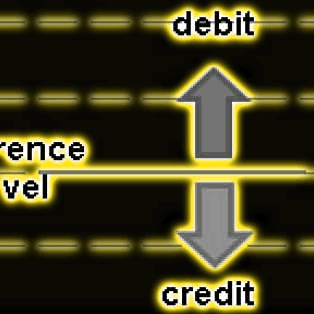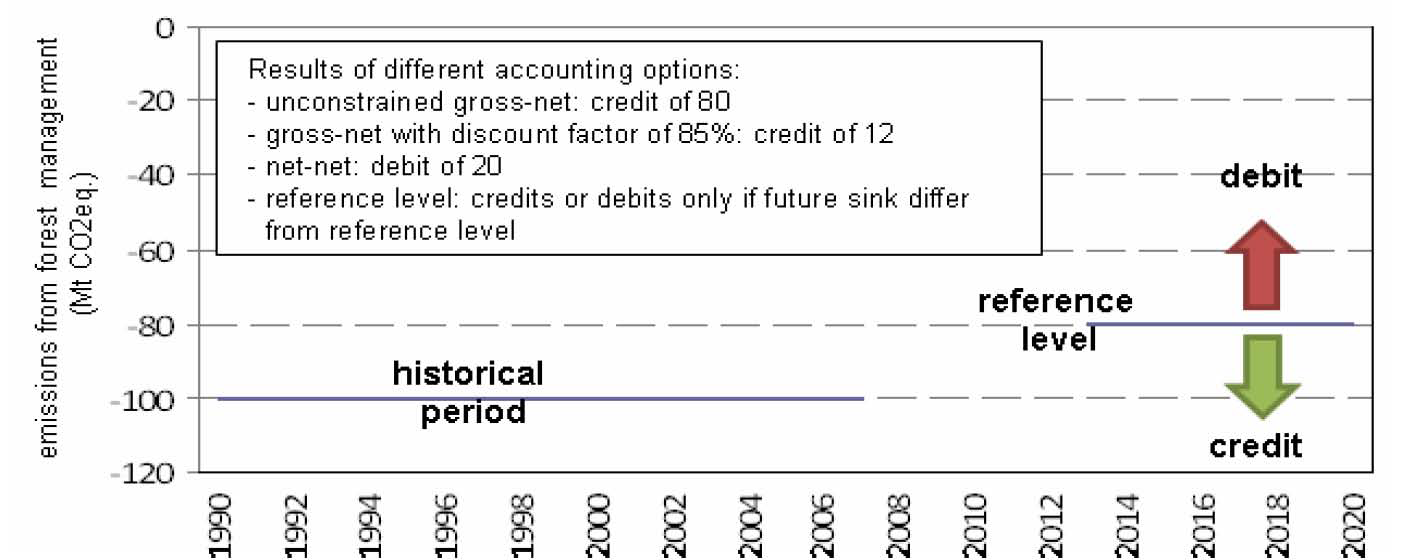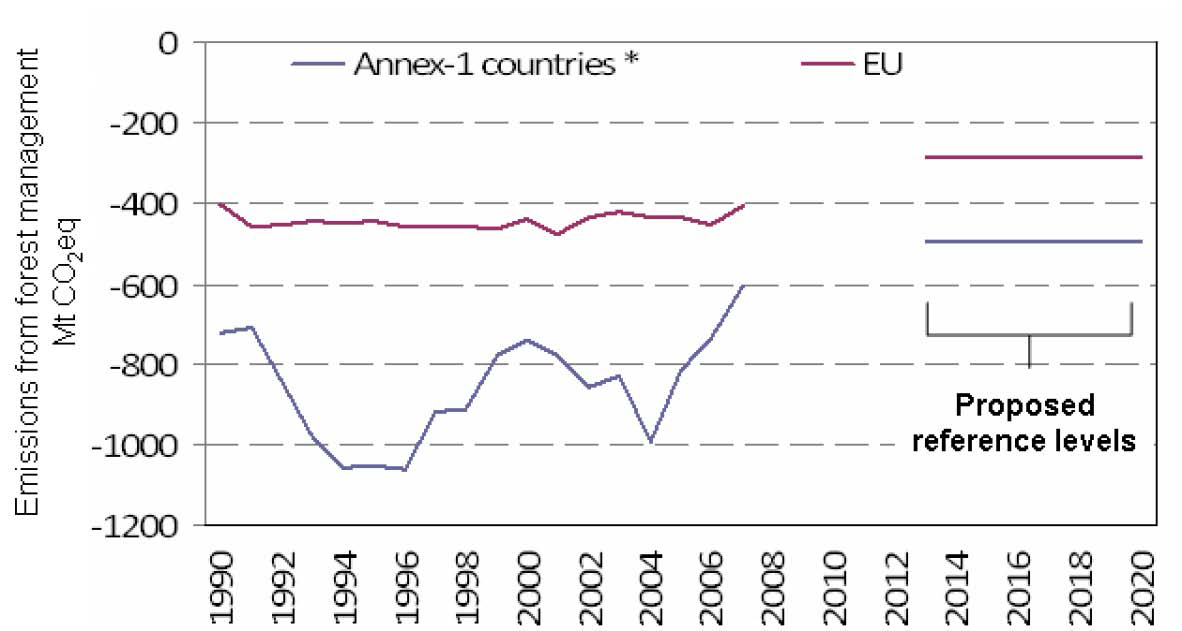
What happened to forests in Copenhagen?
iForest - Biogeosciences and Forestry, Volume 3, Issue 2, Pages 30-32 (2010)
doi: https://doi.org/10.3832/ifor0529-003
Published: Mar 02, 2010 - Copyright © 2010 SISEF
Commentaries & Perspectives
Abstract
After the chaotic final days of the Copenhagen climate conference, many saw only fog, i.e., an unclear outcome and much uncertainty on future steps to take. Were the forests lost in this fog or some tree is still visible, possibly suggesting a path to take? This commentary will briefly analyse the outcome of the Copenhagen conference with respect to the main forestry issues under debate: LULUCF (Land Use Land Use Change and Forestry, i.e., mainly forest CO2 removals in industrialized countries) and REDD (Reducing Emissions from Deforestation and forest Degradation in developing countries).
Keywords
Why forests are important in the climate debate?
Forests have always played an important and controversial role in climate negotiations.
The importance stems from the fact that forests not only are a fundamental element of the biosphere equilibrium, and consequently of the human civilization (e.g., see [1]) but are also, at same time, part of the cause and part of the solution of the climate change problem.
Part of the cause because tropical deforestation accounts for about 15% of total human-induced greenhouse gas (GHG) emissions ([3]), i.e., comparable to the total emissions of EU-27. Part of the solution because forests remove some 30% of anthropogenic GHG emissions ([2]). The relevance of these effects makes the forests an important component of any policy aimed at controlling climate change.
Specifically, efforts to mitigate climate change through forests may involve:
- the reduction of emissions (i.e., conservation of existing forest carbon stocks);
- the enhancement of carbon sink (through afforestation, reforestation, sustainable management);
- energy and material substitution (wood is a renewable source of energy that may replace fossil fuel or more carbon-intensive materials).
Even if it is clear that forests will not provide “the” solution to climate change, in the short term its contribution is considered important for “buying time”. Furthermore, forests offer opportunities for synergies between mitigation, sustainable development, biodiversity and adaptation.
The relevance of forests in climate negotiations was witnessed also by recent speeches of several Heads of State. For instance, the Russian president, few weeks before the conference, said that the acknowledgement of the “capacity of Russian forests to absorb CO2” was a prerequisite for Russia to sign an agreement. In the last day of the Copenhagen conference, Chinese prime minister recalled that China had planted 20 million ha of forests between 2003 and 2008, and that additional 40 million ha are planned to be planted by 2020 compared to 2005.
Current inclusion of forests under the Kyoto Protocol
Under the Kyoto Protocol, “Annex-1” countries (i.e., industrialized) may use CO2 removals (i.e., “sink”) from LULUCF to meet their emission reduction targets during the first commitment period (2008-2012). In particular, a country must include emissions and removal from direct human-induced Afforestation/ Reforestation/ Deforestation since 1990, and may include any of the following “activities”: forest management, cropland management, grazing-land management, revegetation. The current LULUCF accounting rules (i.e., how CO2 removals can be used to meet the targets) have a number of weaknesses, including:
- high complexity;
- very unlikely to give real incentives to promote mitigation actions in forestry. This is because the accountable removals from forest management were limited by country-specific “caps” with the aim to “factor out” the sink due to natural effects and indirect human effects (e.g., climate and nitrogen fertilization, legacy of past management). Given that these caps are in most cases smaller the business-as-usual sink of forests, most countries receive a credit without doing nothing;
- do not guarantee environmental integrity: the inconsistent treatment of the activities, i.e., the fact that a country may choose what to account and what not, may lead to an unbalanced accounting, i.e., that sinks are included and sources excluded. Furthermore, the assumption of carbon neutrality of the bioenergy sector is often not valid.
Current LULUCF accounting system was a compromise due to the special circumstances at Kyoto (targets agreed before the rules) and the complexity and peculiarities of LULUCF (i.e., saturation, permanence, uncertainty, additionality).
Furthermore, while the Kyoto Protocol recognises somehow the potential of enhancing the CO2 sink in industrialized countries (through the LULUCF sector), for a number of reasons it did not include what is considered the forests’ largest potential contribution, i.e., the reduction of emissions from deforestation in developing countries.
The discussion on forests in Copenhagen followed these two lines of work: how to improve the inclusion of the LULUCF sector in the commitments by industrialized countries and how to include a mechanism for reducing emissions from deforestation and forest degradation in developing countries.
LULUCF: losing the forest by the trees?
The intense discussion on LULUCF over the past two years mainly focused on following issues:
- accounting rules, especially for forest management (FM);
- extreme events (natural disturbances, like fires and pests);
- how to account for harvested wood products;
- mandatory or voluntary accounting of LULUCF activities;
In this paper, only the accounting rules of FM will be briefly analysed.
Fig. 1 illustrates the results of different accounting options for FM, assuming a future decrease of the sink. As it is widely accepted the need to factor out the natural and indirect human effects, the “unconstrained gross-net” option (i.e., accounting the absolute value of the current sink) is not considered by most countries as a realistic option. To factor out, various constraints (e.g., discount of 85%, or caps) have been proposed; however, it is likely that any constrains will reduce incentives, and introduce distortions relative to materials and energy substitution.
On the other hand, the “net-net” approach (i.e., accounting the difference between two sinks over time) may create winners or losers mainly depending on the forest age structure, e.g., a country with an increasing sink due to young forest structure would have credits independently on additional actions, while a country with a declining sink due to old forests would account for debits even if its forest management is sustainable. Although these discrepancies would level off in the long term, still net-net accounting is not acceptable by many countries for the next commitment period.
After two years of intense debate on FM accounting rules, the negotiations in Copenhagen have produced some steps forward. While the possibility to continue the current rules (i.e., gross-net with cap) is still in the negotiating text, a wide and growing consensus among Annex-1 countries emerged around the concept of “reference level”. The reference level is a level of CO2 removals by forests against which future removals will be compared, generating emission credits or debits“(see Fig. 1). The reference level may be set either based on historical level or based on projections under a”business-as-usual" (BAU) scenario. In the latter case (adopted by most countries, including the EU) it is clear that - given the high uncertainties that characterize the estimates of the forest sink - the most challenging aspect is to produce accurate projections. To this regard, the most controversial issue is to define what BAU means in terms, for example, of future harvest rates. The EU considers the BAU as the application of policies and measures enacted up to July 2009, but other countries may have different definitions. Based on the submissions done at Copenhagen (⇒ http://unfccc.int/meetings/ad_hoc_working_groups/kp/items/4907.php), the sum of the reference levels proposed for FM is a removal of 286 Mt CO2eq for EU and about 500 Mt CO2eq when most of the other Annex-1 countries are included (Fig. 2). In both cases, these values are smaller than the historical levels: this means that - despite the forest sink is projected to decrease - Annex-1 countries may still account for credits. This possibility has been heavily criticized by the environmental organizations, which consider the reference level based on projections of a declining sink as a loophole which allows industrialized countries to avoid accounting emission debits, while receiving undue credits that dilute the targets of the other sectors. In addition, the risk that some reference level is set artificially low, allowing an easier gain of credits, cannot be totally ruled out. To this regard, a detailed assessment of the proposed reference levels, to increase the comparability among countries, would be highly desirable (although very challenging).
Fig. 1 - Example of results of different accounting rules for forest management in the period 2013-2020, assuming a decrease of the forest sink from 100 to 80 Million tonnes CO2eq. Negative values of emissions indicate removals (i.e., a “sink”).
Fig. 2 - Historical emissions and proposed reference levels for forest management for EU and Annex-1 countries (*: excluding US, Turkey, Ukraine and Croatia because did not submit data; also Canada is excluded because their proposed reference level do not include natural disturbances and thus is not easily comparable with the historical data). Data are elaborated based on countries’ submissions to UNFCCC. Negative values of emissions indicate removals.
On the other hand, the concept of reference level had the merit to overcome the long standing and unproductive debate on gross-net vs. net-net accounting, allowing to take into consideration the country-specific circumstances while keeping a full incentive to increase the sink.
The discussion on reference levels is still open on a number of important issues, including:
- if a revision of the reference level may be allowed (within a given time frame) in case improved and/or more complete estimates become available;
- if and how the need of consistency in terms of coverage of carbon pools and methodology applied will be included in the rules;
- if a cap may be added around the reference level. The cap, while potentially leaving enough incentives to do better than reference level, may pragmatically address the issues related to the uncertainty of reference levels and limit the effects of any possible “cheating”.
Starting from the text discussed in Copenhagen (⇒ http://unfccc.int/resource/docs/2009/awg10/eng/17.pdf, pages 18-32), the negotiation will continue over the course of 2010 to define if and how the reference level will be the accounting option for forest management in any future climate agreement. At the same time, negotiators will try to address the other complex issues under debate, like natural disturbances (very important for countries like Canada and Australia) and harvested wood products.
Behind the difficulties of the technical details, what emerges is that the LULUCF sector represents an important element of flexibility for many industrialized countries. For this reason, many countries emphasized that a decision on LULUCF rules must be taken before they can commit to any reduction of emissions. The challenge is making LULUCF a sector that actively contributes to climate mitigation, and possibly even a “catalist” of overall negotiations, without getting lost in excessive technical details nor risking that excessive LULUCF credits may dilute the efforts in the other sectors.
Green light to REDD
Most observers consider the steps done in Copenhagen toward a mechanism for reducing emissions from deforestation (REDD) as one of the few successful outcomes of the conference. REDD entered directly the text of Copenhagen Accord (⇒ http://unfccc.int/files/meetings/cop_15/application/pdf/cop15_cph_auv.pdf) and was explicitly mentioned by many Heads of States in their speeches. Whatever post-2012 climate agreement will be reached, REDD will be a core element: it is widely considered a cost-effective strategy to reduce emissions from deforestation and an essential tool to encourage developing countries to act against climate change.
The REDD mechanism, to be implemented on a voluntary basis in the developing countries, will provide economic incentives to measurable and verifiable reductions of emissions, compared to a reference level to be established at country level.
In particular, the various texts on REDD emerged in Copenhagen (e.g., ⇒ http://unfccc.int/resource/docs/2009/awglca8/eng/l07a06.pdf, ⇒ http://unfccc.int/files/na/application/pdf/cop15_ddc_auv.pdf) encompassed:
- the list of eligible activities, including the reduction of emissions from deforestation and forests degradation and the “enhancement of C stocks” through forest management and planting;
- the environmental and social safeguards that should be met, with the aim to contribute to a sustainable development, the protection of biodiversity and the active involvement of indigenous people;
- a framework methodological guidance. To this regard, it is likely that IPCC will be soon requested to develop further methodological guidance for estimating emissions from deforestation, in particular on the use of remote sensing.
By contrast, a number of issues remained open for further discussion, including:
- the level of implementation of REDD activities, i.e., national or sub-national. While the majority of countries supported national level activities, some insisted to be allowed to include only portions of the national forest area. In the latter case, the risk is the emission displacement, i.e., that the accounted emissions reduction in one part of the country are counterbalanced by higher emissions in non-accounted portions of the country;
- financing framework, i.e., public funding or carbon market. While many consider the carbon market essential to provide adequate funding in the medium term, some expressed concern that REDD credits may flood the carbon market of industrialized countries, thus disincentivizing/ delaying investments to reduce emissions in the energy sector. To this regard, possible solution for dealing with over-production of credits may involve deeper reduction-commitments by industrialized countries (i.e., expanding the market) or capping the use of REDD credits for offsetting emissions of industrialized countries. In the short term, it is clear that public funding is necessary; to this regard, a number of countries (Australia, France, Japan, Norway, the UK and the US) already committed to give US.5 billion by 2012 as a fast start financing of REDD activities.
The level of ambition. Despite the EU’s efforts to include references to halving the emission from deforestation by 2020 and stopping them by 2030, this issue appeared closely linked to the financial commitment by developed countries and no agreement was reached.
Whatever will be the evolution of the climate negotiations during 2010, i.e., if a legally-binding agreement will be reached or not, forests will continue to play an important role.
Disclaimer
The views expressed are purely those of the writer and may not in any circumstances be regarded as stating an official position of the European Commission.
References
CrossRef | Gscholar
Authors’ Info
Authors’ Affiliation
Sandro Federici
Roberto Pilli
European Commission - Joint Research Centre, Institute for Environment and Sustainability, Ispra, VA (Italy)
Corresponding author
Paper Info
Citation
Grassi G, Federici S, Pilli R (2010). What happened to forests in Copenhagen?. iForest 3: 30-32. - doi: 10.3832/ifor0529-003
Paper history
Received: Feb 12, 2010
Accepted: Feb 15, 2010
First online: Mar 02, 2010
Publication Date: Mar 02, 2010
Publication Time: 0.50 months
Copyright Information
© SISEF - The Italian Society of Silviculture and Forest Ecology 2010
Open Access
This article is distributed under the terms of the Creative Commons Attribution-Non Commercial 4.0 International (https://creativecommons.org/licenses/by-nc/4.0/), which permits unrestricted use, distribution, and reproduction in any medium, provided you give appropriate credit to the original author(s) and the source, provide a link to the Creative Commons license, and indicate if changes were made.
Web Metrics
Breakdown by View Type
Article Usage
Total Article Views: 56649
(from publication date up to now)
Breakdown by View Type
HTML Page Views: 48481
Abstract Page Views: 3141
PDF Downloads: 4050
Citation/Reference Downloads: 28
XML Downloads: 949
Web Metrics
Days since publication: 5707
Overall contacts: 56649
Avg. contacts per week: 69.48
Article Citations
Article citations are based on data periodically collected from the Clarivate Web of Science web site
(last update: Mar 2025)
Total number of cites (since 2010): 4
Average cites per year: 0.25
Publication Metrics
by Dimensions ©
Articles citing this article
List of the papers citing this article based on CrossRef Cited-by.
Related Contents
iForest Similar Articles
Research Articles
Approaches to classifying and restoring degraded tropical forests for the anticipated REDD+ climate change mitigation mechanism
vol. 4, pp. 1-6 (online: 27 January 2011)
Technical Reports
Allometric biomass and carbon factors database
vol. 1, pp. 107-113 (online: 09 July 2008)
Technical Reports
The treatment of land use, land use change and forestry in the post-2012 climate agreement: a perspective from non-Annex I Parties
vol. 3, pp. 56-58 (online: 17 May 2010)
Research Articles
Seeing, believing, acting: climate change attitudes and adaptation of Hungarian forest managers
vol. 15, pp. 509-518 (online: 14 December 2022)
Research Articles
An assessment of climate change impacts on the tropical forests of Central America using the Holdridge Life Zone (HLZ) land classification system
vol. 6, pp. 183-189 (online: 08 May 2013)
Research Articles
Potential impacts of regional climate change on site productivity of Larix olgensis plantations in northeast China
vol. 8, pp. 642-651 (online: 02 March 2015)
Research Articles
Predicting the effect of climate change on tree species abundance and distribution at a regional scale
vol. 1, pp. 132-139 (online: 27 August 2008)
Research Articles
Impact of climate change on radial growth of Siberian spruce and Scots pine in North-western Russia
vol. 1, pp. 13-21 (online: 28 February 2008)
Review Papers
Impacts of climate change on the establishment, distribution, growth and mortality of Swiss stone pine (Pinus cembra L.)
vol. 3, pp. 82-85 (online: 15 July 2010)
Research Articles
Is Pinus pinea growth affected by climate change in western Anatolia?
vol. 18, pp. 93-101 (online: 28 April 2025)
iForest Database Search
Search By Author
Search By Keyword
Google Scholar Search
Citing Articles
Search By Author
Search By Keywords
PubMed Search
Search By Author
Search By Keyword










